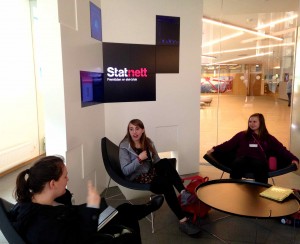The Statnett headquarters is a new, distinctively Scandinavian building with clean, open space and sleek furnishings. In the lobby are screens displaying factual tidbits, a rotation of information including the current electricity production in the Nordic countries, the balance of electrical supply and demand, the exact Hertz in Norway’s outlets at the instant, and how many days since the last injury incurred in providing the essential resource to a bustling country. Statnett is the state-owned operator of Norway’s main grid. Their job is to make sure that 50 Hz is supplied to electrical outlets all the time. In reality, though, 49.9 to 50.1 Hz is acceptable. This is a tricky job because electricity cannot be stored; therefore, supply must exactly match demand or else things like blackouts can occur. And, it’s easy to understand how demand can vary month to month and minute to minute. Much more electricity is used during the winter months for heating than during the summer. Electricity use is low at night while people sleep, but peaks in the morning when people are waking up and cooking breakfast. This is followed by a lull and then another peak at dinnertime.
In Statnett, electrical engineers with some knowledge of economics monitor the supply and demand of electricity in all of Norway. When the electricity starts to fall below 50.0 Hz, Statnett operators must call on their list of bids to buy more electricity. Since about 95% of Norway’s electricity comes from hydropower in the mountains, this is a nearly instant process as hydropower is easily and quickly turned on and off. Statnett also houses the control center monitoring the main grid of the southern part of Norway. This office is in charge of monitoring lines to make sure they are not overloaded. They are also responsible for turning off lines when maintenance must be conducted. The coast’s violent storms and the precipitous landscape of the mountains present a treacherous work environment for repairing lines. Given this, Statnett puts the safety of its workers first. These operators also manage the electricity fed to the smaller regional and distributional grids.
Our visit to Statnett was wonderful and fun; they treated us to free coffee (a sure way to make friends with sleepy college students in the morning!) and helped us learn about the electric grid as well as Norway as a “green battery” for Europe by exporting its hydropower. Statnett oversees the import of cheap, excess electricity from renewable sources like solar and wind from its European neighbors, then exports its ever-reliable hydropower when the rest of Europe is in need. This way Norway can help to balance a more renewably-sourced electric grid in Europe.



